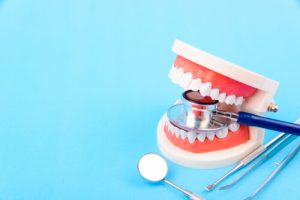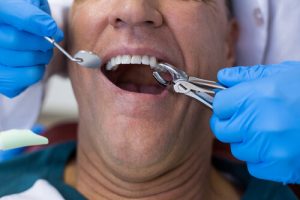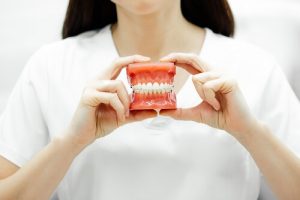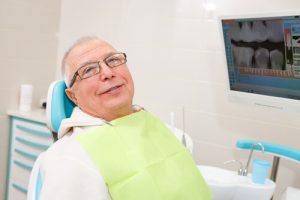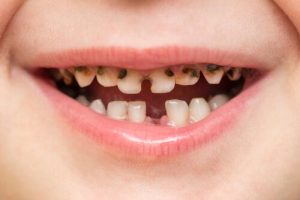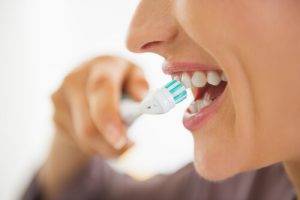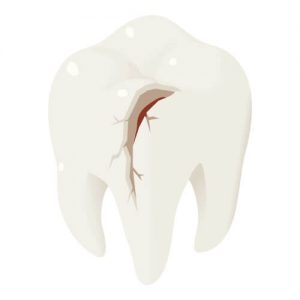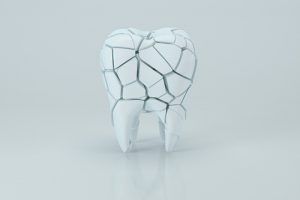
Food Stuck in Molar Groove: Navigating Dental Hygiene Challenges
Encountering food stuck in the molar groove is a common yet often overlooked aspect of dental hygiene that can lead to discomfort and potential oral health issues. This occurrence hinders the enjoyment of your favorite meals and poses challenges to maintaining optimal oral cleanliness. The grooves and fissures in our molars are prime spots for food particles to lodge, creating environments where bacteria can thrive if not promptly addressed. Exploring effective strategies for removing and preventing food from getting stuck in these molar grooves is essential for anyone looking to preserve their dental health and ensure a comfortable, clean mouth.
Stick with us as we delve into practical solutions and preventive measures to keep your molars free from unwanted food remnants. We don’t give away the immediate solutions, creating a sense of anticipation and engagement for the reader.
Understanding the Molar Groove: Anatomy and Challenges
Understanding the anatomy and challenges of filling the molar groove is pivotal for maintaining oral health. The molar groove is a natural part of the tooth’s structure, consisting of indentations and fissures on the chewing surface of the molars. These grooves play a crucial role in grinding food but also pose unique challenges, as they can trap food particles, leading to potential dental issues.
Anatomy of Molar Grooves
Molar grooves enhance the teeth’ ability to break down food during chewing. Their intricate patterns, however, make them susceptible to trapping food debris.
Challenges Presented
The main challenge is the risk of food particles getting stuck between your teeth, creating an environment conducive to poorly addressed bacteria growth. This can lead to plaque buildup, cavities, and even periodontal disease.
Potential for Dental Issues
Trapped food particles can accelerate tooth decay and increase the risk of gum disease. Over time, this can lead to more serious complications, including tooth loss and infection.
Importance of Regular Cleaning
Effective food removal from molar grooves is essential. Regular brushing, flossing, and mouthwash can dislodge trapped food and prevent the buildup of plaque and bacteria.
Why Food Stuck in Molar Groove: Common Culprits
Identifying the common culprits behind foods stuck in molar grooves is crucial for anyone looking to maintain optimal dental hygiene. Certain types of food are more prone to lodging in the intricate spaces of the molars, posing challenges to oral health by creating potential spots for bacteria and plaque buildup. Awareness of these foods can help individuals take proactive steps in their dietary choices and oral care routines to minimize risks and ensure healthier teeth and gums.
Sticky Sweets and Candies
Sweets can adhere to the tooth’s surface and settle into grooves, which are difficult to remove even with thorough brushing.
Meaty Fibers
Pieces of meat or bone, especially from steak or ribs, often enter molar grooves and remain trapped between teeth.
Popcorn Kernels
The hard shells of popcorn kernels can easily slip into molar grooves, making them challenging to remove and potentially causing discomfort to patients.
Seeds and Nuts
Small seeds from fruits like strawberries or pieces of nuts can become lodged in the grooves of two teeth, creating breeding grounds for bacteria.
Fibrous Vegetables
Celery and similar fibrous vegetables can leave strands stuck in the teeth, contributing to plaque buildup if not cleaned out.
Effective Removal Techniques for Food Stuck in Molar Grooves
Effectively removing food stuck in molar grooves is critical to maintaining oral hygiene and preventing dental problems. If not addressed promptly, the grooves and crevices of molars are prone to trapping food particles, leading to plaque buildup, tooth decay, and bleeding gums. Employing the right techniques for removal can significantly reduce the risk of these issues and keep your mouth healthy.
Regular Brushing with the Right Technique: Using a soft-bristled toothbrush and fluoride toothpaste, brush your teeth twice a day using circular motions to clean the grooves of your molars effectively.
Dental Flossing: Daily, remove food particles and plaque from between teeth and molar grooves where a toothbrush might not reach.
Water Flossers: An alternative or supplement to traditional flossing, water flossers use a stream of pulsating water to clean between teeth and along the gum line of healthy teeth, effectively dislodging trapped food.
Interdental Brushes: These small brushes are designed to clean the space between teeth and can be particularly effective for cleaning around and in the grooves of molars.
Professional Dental Cleanings: Regular visits to the dentist for professional cleanings can remove plaque and tartar buildup that at-home cleaning might miss, especially in hard-to-reach molar grooves.
Preventive Measures: Keeping Your Molars Free from Food Particles
Implementing preventive measures to keep your molars free from food particles is pivotal for safeguarding oral health. With their deep grooves and fissures, Molars are particularly susceptible to trapping food, which can lead to plaque buildup and subsequent dental issues such as cavities and gum disease. Proactive steps not only facilitate the removal of food debris but also minimize the risk of it becoming lodged in the first place.
Mindful Eating Habits: Choose foods less likely to get trapped in the molar cavity, and be conscious of sticky or hard foods that pose a higher risk of lodging in dental grooves.
Thorough Brushing Technique: Brush at least twice a day using fluoride toothpaste and a soft-bristled brush, paying extra attention to the back molars and their grooves to remove all food particles.
Regular Use of Dental Floss: Floss daily to remove food debris and plaque from between teeth and molar grooves, areas a toothbrush may not fully reach.
Incorporate Mouthwash: Utilize antimicrobial mouthwash to help the tongue dislodge food particles and kill bacteria in the mouth, providing an additional cleaning layer.
Routine Dental Check-ups: Regular visits to the dentist for check-ups and cleanings are crucial for maintaining oral health. They allow for the professional removal of plaque and tartar buildup.
When to Seek Professional Dental Care for Persistent Problems
Recognizing when to seek professional dental care for persistent problems is crucial for maintaining long-term oral health. While regular at-home oral hygiene practices play a significant role in preventing dental issues, certain conditions may not improve with home care alone and require treatment with the expertise of a dental professional. Awareness of the signs that indicate the need for professional intervention can help address issues effectively before they escalate into more serious conditions.
Persistent Pain or Discomfort: If you experience ongoing pain or discomfort in your teeth or gums that doesn’t subside with at-home care, it’s a clear sign to consult a dentist.
Recurring Gum Bleeding: While occasional gum bleeding can occur, if it becomes frequent or recurs regularly, especially during brushing or flossing, it may indicate gum disease or other underlying issues.
Continuous Bad Breath: Persistent bad breath, not alleviated by brushing, flossing, or mouthwash, could signify a deeper problem, such as an infection or decay, necessitating a dental check-up.
Loose or Shifting Teeth: If there are any noticeable changes in the positioning of your wisdom teeth or if they become loose, it’s critical to seek dental advice to prevent further damage or loss.
Visible Signs of Infection: Symptoms such as swelling, pus, or a feeling of warmth around a tooth or gum area indicate an infection requiring immediate professional care.
In summary, dealing with food stuck in molar grooves requires attention and proper oral hygiene practices to prevent potential dental issues. By employing effective cleaning techniques, understanding the importance of regular dental check-ups, and considering dental treatments for persistent problems stuck food in, individuals can significantly reduce the risks associated with food particles lodged in the teeth. Embracing these strategies not only ensures the health of your molars but also contributes to overall oral wellness. Remember, a proactive approach to managing food stuck in molar grooves can lead to a healthier mouth and a brighter smile.
References
Dental Sealants: How They Work
https://my.clevelandclinic.org/health/treatments/10912-sealants
Cavities and tooth decay – Symptoms and causes – Mayo Clinic
https://www.mayoclinic.org/diseases-conditions/cavities/symptoms-causes/syc-20352892
Black Tartar on Teeth: Causes and How to Get It Removed
https://www.healthline.com/health/dental-and-oral-health/black-tartar-on-teeth
Food Stuck In Molar Teeth
https://www.practo.com/consult/food-stuck-in-molar-teeth-yesterday-i-went-to-a-restaurant-i-feel-it-s-a-stone-or-something-else-i-don-t-know-but-it/q
3 Snacks To Avoid If You Don’t Want It Stuck In Your Teeth
https://www.colgate.com/en-us/oral-health/nutrition-and-oral-health/what-to-do-if-food-gets-stuck-in-teeth

How Long Can You Leave a Cavity Untreated: Risks and Consequences
Many people may wonder: how long can you leave a cavity untreated? A common question can have serious consequences if not addressed promptly. Untreated cavities can lead to pain, infection, and even tooth loss. In this article, we will explore the potential risks of ignoring a cavity and provide insight into when it’s time to seek professional dental care.
How Long Can You Leave a Cavity Untreated? Understanding the Risks
Leaving a cavity untreated can lead to various complications and risks for oral health. While the exact timeframe varies depending on individual factors such as the size and severity of the cavity, delaying treatment for too long can result in the decay progressing deeper into the tooth, potentially reaching the nerve or pulp tissue. Understanding the risks of untreated cavities is crucial for maintaining optimal oral health and preventing severe complications.
Progression of Decay
If left untreated, cavities can progress deeper into the tooth, eventually reaching the dentin layer beneath the tooth root enamel. As decay progresses, the cavity grows larger and may extend into the tooth’s nerve, resulting in throbbing pain and increased sensitivity.
Increased Risk of Infection
Untreated cavities create an environment conducive to bacterial growth, increasing the risk of infection. Bacteria can penetrate deep into the tooth, leading to the formation of tooth abscesses, which are painful and can spread to other areas of the body if the cavities are left untreated.
Potential Tooth Loss
As decay advances, it weakens the tooth structure, making it more prone to fracture or breakage. The tooth may become irreparably damaged in severe cases, necessitating extraction to prevent further complications and preserve oral health.
Complications and Further Damage
Delaying treatment for cavities can result in more extensive and costly dental procedures in the future. Without timely intervention, cavities can progress to the point where root canal treatment or tooth extraction may be necessary to treat cavities and address the damage caused by decay.
Factors Influencing the Progression of Untreated Cavities
Several key factors can contribute to the advancement of decay within a cavity, ultimately impacting the overall health of the affected tooth and surrounding structures.
Dietary Habits and Sugar Intake
High consumption of sugary foods and beverages can fuel the growth of cavity-causing bacteria in the mouth, leading to increased acid production and enamel erosion. Regular exposure to sugary substances without proper or good oral hygiene can accelerate the progression of untreated cavities.
Oral Hygiene Practices
Inadequate oral hygiene, such as infrequent brushing and flossing, allows plaque and food particles to accumulate on the teeth, providing a breeding ground for bacteria. Poor oral hygiene habits contribute to the development and progression of cavities by facilitating bacterial growth and enamel demineralization.
Presence of Bacteria and Plaque Buildup
The presence of harmful bacteria in the mouth, combined with insufficient plaque removal, can lead to the formation of cavities. Bacteria produce acids that attack tooth enamel, initiating the decay process. Without proper oral hygiene measures, plaque accumulates on the teeth, further promoting cavity development.
Severity of Decay and Cavity Size
The severity of decay within a cavity and the size of the cavity itself influence the rate of progression. Larger cavities and deeper decay progress more rapidly as the bacteria have greater access to the tooth’s inner layers, including the dentin and tooth pulp. Without intervention, decay can spread rapidly throughout the tooth structure.
Signs and Symptoms of Advanced Untreated Cavities: Recognizing Warning Signs
Recognizing the signs and symptoms of advanced untreated cavities is crucial for identifying dental issues early and seeking timely treatment to prevent further complications. Understanding these warning signs can help individuals take proactive measures to preserve their oral health and avoid more extensive dental interventions.
Persistent Tooth Pain: Advanced untreated cavities often manifest through persistent tooth pain, ranging from dull and achy to sharp and throbbing. As decay progresses deeper into the tooth, the pain intensifies, particularly during activities such as eating, drinking, or applying pressure to the affected tooth.
Increased Sensitivity to Temperature: Untreated cavities can result in heightened sensitivity to hot and cold temperatures. Individuals may experience discomfort or sharp pain when consuming hot beverages or cold foods, indicating that the cavity has progressed to affect the tooth’s nerve endings.
Visible Holes or Pits in Tooth Surface: Decay erodes the tooth structure, leading to visible holes or pits on the tooth surface. These cavities may appear as dark spots or pits on the enamel, often accompanied by tooth surface discoloration or staining.
Swelling or Pus Around the Tooth: Advanced untreated cavities can lead to infection and abscess formation, resulting in swelling or pus around the affected tooth. Swelling may extend to the surrounding gums, causing redness, tenderness, and inflammation.
Bad Breath or Unpleasant Taste: Bacterial growth within an untreated cavity can cause persistent bad breath or an unpleasant taste in the mouth. Bacteria produce acids that break down food particles, releasing foul-smelling gases and leading to chronic halitosis or a metallic taste.
Seeking Timely Dental Care for Untreated Cavities: Importance of Early Intervention
Understanding the importance of prompt dental care can empower individuals to prioritize their oral health and seek professional assistance at the earliest signs of cavity development.
Prevention of Further Damage: Timely dental care for untreated cavities helps prevent damage to the affected teeth and surrounding structures. By addressing cavities in the early stages, dentists can remove decayed tissue, fill the cavities with appropriate materials, and restore the tooth’s functionality and integrity. This prevents decay from spreading deeper into the tooth and causing more extensive damage.
Preservation of Tooth Structure: Early intervention also aids in preserving the natural structure of the dental crown of the affected tooth. Dental filling or other treatments can prevent the need for more invasive procedures such as root canal or teeth extractions.
Prevention of Pain and Discomfort: Seeking timely dental care for untreated cavities helps prevent the onset of severe pain and discomfort associated with dental problems. Cavities left untreated can lead to toothaches, tooth sensitivity to hot and cold temperatures, and discomfort while chewing. Immediate treatment of root cavities alleviates these symptoms and restores comfort to individuals, improving their overall quality of life.
Preservation of Overall Oral Health: Timely dental care for untreated cavities is essential for preserving overall oral health. By addressing cavities promptly, individuals can maintain healthy teeth and gums, prevent the spread of decay, and reduce the risk of developing complications such as infections or abscesses. Regular dental check-ups and preventive measures like fluoride toothpaste and daily flossing prevent cavities and support long-term oral health.
In conclusion, addressing a cavity as soon as possible is important to prevent further damage and complications. It is always best to consult a dentist for personalized advice and treatment options. Remember, proactive oral health care is key to maintaining a healthy and happy smile. If you have any concerns about your dental health, don’t hesitate to contact a professional for guidance.
References
Dental cavities: MedlinePlus Medical Encyclopedia
https://medlineplus.gov/ency/article/001055.htm
Cavities and tooth decay – Symptoms and causes – Mayo Clinic
https://www.mayoclinic.org/diseases-conditions/cavities/symptoms-causes/syc-20352892
Cavities (Tooth Decay): Symptoms, Causes & Treatment
https://my.clevelandclinic.org/health/diseases/10946-cavities
Cavities
https://www.cdc.gov/oralhealth/fast-facts/cavities/index.html
What happens to your teeth if you don’t treat a cavity
https://www.businessinsider.com/guides/health/dental/what-happens-if-you-dont-treat-cavity

Holes in Teeth That Aren’t Cavities: Uncovering the Surprising Causes
In dentistry, a dental dilemma often perplexes both patients and professionals alike: holes in teeth that aren’t cavities. Though seemingly contradictory, these enigmatic oral irregularities have garnered attention for their mysterious presence.
This article delves into the intricacies of these strange holes, shedding light on their possible origins and the potential implications they may hold for our oral health. From plausible causes to preventive measures, join us on this enlightening journey as we explore the captivating world of holes in teeth that aren’t cavities.
Introduction to Non-Cavity Tooth Holes: What Are They?
Holes in teeth that aren’t cavities can be perplexing, as cavities are often the first thought when one notices a hole in a tooth. However, several other conditions can lead to the formation of holes in your teeth without involving the tooth decay process typically associated with dental caries.
Understanding Non-Cavity Tooth Holes:
- Enamel Erosion: Enamel erosion, often caused by acidic foods and drinks, can lead to the gradual wearing away of the tooth’s enamel, resulting in tiny holes.
- Dental Trauma: Physical trauma to a tooth, such as a chip or crack from an injury, can create a hole. This type of damage doesn’t necessarily involve decay but can expose the tooth’s inner layers.
- Abrasion and Attrition: Excessive tooth brushing or grinding can lead to abrasion and attrition, wearing down the tooth surface and potentially forming holes over time.
- Dental Anomalies: Some people may have congenital dental anomalies where pits or fissures naturally exist in their teeth, not caused by decay.
- Root Resorption: In rare cases, the roots of teeth can undergo resorption, leading to holes. This can result from internal factors such as a tooth infection or external factors like traumatic dental injuries.
- Gum Disease: Advanced gum disease, or periodontitis, can cause receding gums and the formation of small pockets or holes along the gum line.
Enamel Erosion: A Common Cause of Tooth Holes
Enamel erosion is a prevalent cause of non-cavity tooth holes, stemming from the gradual breakdown of the tooth’s protective outer layer. Understanding its causes and impacts is vital for effectively preventing and treating enamel decay.
Key Aspects of Enamel Erosion Leading to Tooth Holes:
- Acidic Diet: Frequent consumption of acidic foods and beverages, such as citrus fruits, soda, and wine, can wear away the enamel over time, creating tiny holes in the tooth surface.
- Chemical Erosion: Certain medical conditions, like acid reflux or bulimia, expose teeth to stomach acids, accelerating enamel erosion.
- Mechanical Wear: Overzealous tooth brushing or using hard-bristled toothbrushes can contribute to enamel erosion, forming small holes.
- Dry Mouth: Saliva acts as a natural barrier protecting against enamel erosion. Conditions causing dry mouth, such as certain medications or diseases, can hasten enamel loss.
- Genetic Factors: Some individuals are more prone to enamel erosion due to genetic factors affecting the quality and resilience of their tooth enamel.
- Lifestyle Factors: Habits like teeth grinding (bruxism) and using certain oral hygiene products that are too abrasive can also contribute to enamel erosion.
The Role of Tooth Wear and Abrasion in Forming Holes
Tooth wear and abrasion play a significant role in forming holes in teeth, separate from cavity-related dental decay. These conditions result from mechanical forces and habits that gradually erode the tooth structure.
Detailed Impacts of Tooth Wear and Abrasion:
- Mechanical Erosion: Tooth wear often occurs due to mechanical erosion, where repeated actions like grinding (bruxism) or clenching exert excessive force on the teeth, leading to gradual erosion and the formation of tiny holes.
- Abrasive Brushing: Using hard-bristled toothbrushes or aggressive brushing techniques can strip away the enamel, especially at the gum line, creating grooves or holes in the teeth.
- Dietary Habits: Regularly consuming hard or abrasive foods can contribute to tooth wear. Over time, this can lead to the thinning of enamel and the development of holes.
- Tooth Misalignment: Misaligned teeth can cause uneven distribution of biting forces, leading to excessive wear in certain areas, eventually forming holes in the teeth.
- Foreign Objects: Habitual biting on foreign objects like pens, nails, or ice can cause physical wear and tear on the teeth, resulting in abrasion and hole formation.
- Preventive Measures: To prevent tooth wear and abrasion, it is recommended to use a soft-bristled toothbrush, adopt gentle brushing techniques, wear a mouthguard if grinding is an issue, and maintain a balanced diet.
Dental Trauma: Impact and Fractures Leading to Tooth Holes
Dental trauma, involving physical impact or injury to the teeth, is a notable cause of holes forming in teeth that are not attributed to decay. Understanding the dynamics of dental trauma helps recognize and manage its effects on tooth decay.
Key Aspects of Dental Trauma Resulting in Tooth Holes:
- Types of Trauma: Dental trauma can range from minor chips to severe fractures. High-impact activities, accidents, or falls often cause such injuries, leading to visible holes or cracks in the teeth.
- Immediate Impact: The immediate result of trauma can be a visible break in the tooth, which may appear as a hole, especially if a piece of the tooth is lost or the inner layers are exposed.
- Stress Fractures: Repeated stress or pressure on a tooth, such as from grinding, can lead to stress fractures. These small cracks can eventually develop into larger holes.
- Risk of Infection: An untreated traumatic injury can expose the tooth’s inner pulp, increasing the risk of infection and potentially leading to more significant holes due to decay.
- Treatment of Traumatic Injuries: The treatment of dental trauma varies based on severity. It can range from dental fillings to root canal therapy for more severe fractures.
- Long-Term Monitoring: After initial treatment, ongoing monitoring is essential to ensure the tooth remains healthy and to prevent further deterioration that could lead to hole formation.
Tooth Resorption: An Uncommon Yet Possible Cause
Tooth resorption, while not as common as other dental issues, is a significant condition that can lead to the formation of holes in teeth. It involves the breakdown and loss of dental hard tissue, often without clear symptoms in the early stages of developing tooth decay.
Critical Insights into Tooth Resorption:
- Understanding Resorption: Tooth resorption is a process where the body starts to break down and absorb the tissues of the tooth. It can affect the inner dentin, enamel, or even the cementum covering the root.
- Types of Resorption: This condition can be classified as internal or external, depending on where the resorption begins. Internal resorption starts from within the tooth, often in the pulp, while external resorption begins at the outer surfaces.
- Causes and Risk Factors: The exact cause of tooth resorption can vary, including factors like trauma, inflammation, orthodontic treatment, or idiopathic reasons where the cause is unknown.
- Symptoms to Watch For Early stages of resorption might go unnoticed. However, as it progresses, it can lead to symptoms like tooth sensitivity, discoloration, or a visible hole or pit in the tooth.
- Diagnosis and Treatment: Tooth resorption is typically diagnosed through dental X-rays. Treatment depends on the extent of resorption and may include root canal therapy, restoration, or, in severe cases, extraction.
- Monitoring and Prevention: Regular dental checkups are important for early detection. While prevention can be challenging due to varied causes, maintaining good dental hygiene and addressing dental traumas promptly may help.
Identifying and Diagnosing Non-Cavity Tooth Holes
Identifying and diagnosing non-cavity tooth holes is critical in preventing tooth decay and ensuring appropriate dental care. These holes, arising from causes other than decay, require a distinct approach for accurate diagnosis and treatment.
Key Steps in Identification and Diagnosis:
- Visual Examination: The first step involves thoroughly examining the tooth. Dentists look for signs like discoloration, unusual wear patterns, or visible pits indicative of non-cavity issues.
- Symptom Assessment: Understanding the patient’s symptoms, such as sensitivity to temperature or pressure, can provide clues. For instance, sensitivity to cold might suggest enamel erosion, whereas tooth pain upon biting could indicate a fracture.
- Dental X-rays: X-rays are essential in diagnosing non-cavity tooth holes. They can reveal internal changes in the tooth structure, such as resorption, that aren’t visible to the naked eye.
- Evaluation of Dental History: A review of the patient’s dental history, including past traumas, orthodontic treatment, or habits like bruxism, aids in identifying potential causes of the tooth holes.
- Testing Tooth Vitality: Conducting tests to assess the vitality of the tooth helps determine if the nerve inside the tooth is affected, which is crucial for deciding the course of treatment.
- Consultation for Underlying Conditions: In cases where systemic issues are suspected, such as acid reflux contributing to enamel erosion, a consultation with medical professionals may be necessary.
Treatment Options and Preventive Measures for Non-Cavity Tooth Holes
Effective treatment and preventive measures for non-cavity tooth holes are essential for oral health. Addressing these issues involves a combination of professional dental procedures and lifestyle modifications.
Comprehensive Treatment and Prevention Strategies:
- Therapeutic Treatments: Depending on the cause and severity, treatments like fillings, crowns, or veneers can restore the tooth’s structure and appearance. In cases of enamel erosion, bonding or remineralization therapies may be recommended.
- Root Canal Therapy: For holes due to internal resorption or fractures reaching the pulp, root canal therapy might be necessary to remove the affected tissue and save the tooth.
- Surgical Intervention: In severe cases of resorption or trauma, surgical interventions, such as extraction followed by dental implants or bridges, may be required.
- Dietary Changes: Reducing the intake of acidic and sugary foods and drinks can help prevent enamel erosion and subsequent hole formation.
- Oral Hygiene Practices: Regular brushing with fluoride toothpaste, flossing, and using mouthwash can protect against factors leading to tooth holes.
- Use of Mouthguards: For those with bruxism, using a mouthguard can prevent tooth wear and the formation of holes due to grinding.
- Regular Dental Checkups: Routine dental visits allow for early detection and treatment of issues that could lead to the formation of non-cavity tooth holes.
In conclusion, cavities are a common cause of holes in teeth, but it’s important to remember that other factors affect the tooth and should also be considered. Dental conditions such as enamel hypoplasia, tooth erosion, and cracked teeth can also lead to holes in teeth that aren’t cavities. Seeking professional dental care and maintaining good oral hygiene practices are essential for preventing and addressing these issues. Individuals can ensure optimal dental health and overall well-being by staying informed about the various causes and treatments available.
References
Tooth Decay Stages: 5 Stages and How to Treat Each
https://www.healthline.com/health/dental-and-oral-health/tooth-decay-stages
Cavities and tooth decay – Symptoms and causes – Mayo Clinic
https://www.mayoclinic.org/diseases-conditions/cavities/symptoms-causes/syc-20352892
Tooth Discoloration: Causes, Treatment & Prevention
https://my.clevelandclinic.org/health/symptoms/10958-tooth-discoloration
What to do about a painless hole in your tooth
https://www.medicalnewstoday.com/articles/hole-in-tooth-no-pain
Tooth Decay & Cavities – Treatment, Symptoms and Causes
https://www.oralb.co.uk/en-gb/oral-health/conditions/cavities-tooth-decay/tooth-decay-cavities-symptoms-causes-treatments

Black Spots on Teeth That Aren’t Cavities: Understanding the Causes
Have you ever noticed black spots on your teeth that aren’t cavities? Surprisingly, there can be various reasons behind this peculiar occurrence. While it may cause concern, it’s essential to understand that not all dental discolorations indicate tooth decay.
In this article, we will explore the fascinating world of black spots on teeth, uncovering the potential culprits and shedding light on how to address this issue effectively. So, let’s embark on this journey to discover the truth behind those mysterious black spots and remove that spot on the tooth surface and regain your dazzling smile.
Common Causes of Black Spots on Teeth Besides Cavities
Black spots on teeth that aren’t cavities can often cause concern, but they can result from various non-cavity-related issues. Understanding these different causes is essential for proper dental care and treatment.
Surface Stains:
Commonly caused by certain foods, and drinks (like coffee or red wine), surface stains can appear as black or brown spots on the tooth enamel. Regular dental cleaning and good oral hygiene can help prevent and reduce these stains.
Tobacco Use:
Both smoking and chewing tobacco significantly contribute to developing dark stains on the teeth. Nicotine and tar in tobacco products are major culprits for these discolorations.
Dental Materials:
Dental procedures such as a root canal or using certain materials for fillings can leave dark spots on teeth. These are usually harmless and confined to the treated area.
Metallic Compounds in Medications:
Certain antibiotics and medications containing metallic compounds can cause black or dark stains as a side effect, especially when used long-term.
Tartar Buildup:
Plaque that hardens on the teeth can lead to tartar buildup, often visible as dark spots along the gum line. To treat this problem, routine dental cleanings and examinations are required.
Fluorosis:
Too much fluoride intake, particularly in children whose teeth are still developing, can cause fluorosis, leading to black or brown spots on the teeth.
Medical Conditions:
Certain medical conditions like celiac disease can affect the tooth’s enamel, resulting in discolored spots on the teeth. This usually requires a more comprehensive medical and dental approach.
Trauma or Decay:
A tooth that has suffered trauma or the beginning stages of decay can exhibit a black spot. This doesn’t always mean a cavity is present, but it’s essential to have it evaluated by a dental professional.
Enamel Hypoplasia:
A condition where the enamel doesn’t form correctly, often due to nutritional deficiencies or certain medications, can manifest as spots on the teeth.
Distinguishing Between Harmless Stains and Oral Health Concerns
Differentiating between harmless stains on teeth and signs of oral health concerns is crucial in maintaining dental hygiene and overall oral health. Understanding the nature of various dental discolorations can help determine when professional dental intervention is needed.
- Nature of the Stain: Harmless stains are often superficial, caused by food, drinks, or tobacco, and are generally uniform in color. They usually cover larger areas and are found on the surface of the teeth.
- Location and Consistency: External stains that can be removed through regular cleaning or professional dental whitening are typically harmless. However, spots that are rough have an irregular shape or are located near the gum line may indicate more serious issues.
- Associated Symptoms: If the discoloration is accompanied by other symptoms like pain, sensitivity, swelling of the gums, or bad breath, it could signify underlying dental problems such as decay or gum disease.
- Duration and Change Over Time: Stains that fade over time with proper oral hygiene are often harmless. Conversely, spots that persist, grow, or change color and texture could indicate more serious conditions.
- Response to Cleaning: Stains that lighten or disappear with brushing, flossing, or professional cleaning are usually harmless. Persistent discoloration despite good oral hygiene practices may require further investigation.
- Medical and Dental History: Consideration of personal and family dental history is important. Previous dental work, medications, and familial tendencies toward certain oral health issues can influence the nature of tooth discoloration.
Treatment Options for Removing Black Spots on Teeth
Treating black spots on teeth, particularly those not caused by cavities, involves various dental techniques tailored to the underlying cause of the dark spot or discoloration. From simple at-home remedies to professional dental procedures, several effective options are available.
- Professional Dental Cleaning: A routine dental cleaning can effectively remove discolorations for superficial stains. Dental professionals use specialized tools to scrape away tartar and plaque that contribute to staining gently.
- Teeth Whitening Treatments: Professional whitening treatments, either in-office or at-home kits like whitening strips prescribed by a dentist, can effectively lighten teeth and remove surface stains. These treatments use bleaching agents to break down stains.
- Dental Veneers: Dental veneers offer a cosmetic solution for more persistent or extensive discoloration. These thin porcelain shells are custom-made to fit over the teeth, providing a uniform and stain-free appearance.
- Enamel Microabrasion: This procedure involves gently removing a small enamel layer to eliminate surface stains. It’s often followed by teeth whitening for enhanced results.
- Home Remedies: Home remedies like brushing with baking soda mixed with water can be mildly effective for minor stains. However, these should be used cautiously to avoid damaging the enamel.
- Dietary Changes: Limiting intake of stain-causing foods and beverages, such as coffee, tea, and red wine, can prevent further staining. Drinking water after consuming these foods can also help reduce their staining effect.
- Addressing Underlying Medical Conditions: It is advised to speak with a healthcare specialist about the underlying illness if the black spots are caused by medical diseases like fluorosis or certain drugs.
Preventive Measures to Avoid the Formation of Black Spots on Teeth
Maintaining adult teeth’s beauty and oral health both depend on preventing the development of black spots on teeth. Changing one’s lifestyle and maintaining proper dental care can greatly lower the chance of getting these discolorations.
- Practice Good Oral Hygiene: Consistent brushing twice daily with fluoride toothpaste and daily flossing helps remove plaque and food particles that can cause staining. Using an antiseptic mouthwash can further aid in keeping the mouth clean.
- Routine Dental Checkups: Visiting the dentist reglarly for professional cleanings and examinations are crucial. These appointments allow for removing tartar buildup and early detection of potential problems.
- Dietary Choices: Limiting the consumption of stain-causing foods and beverages like coffee, tea, red wine, and certain berries is beneficial. When consuming these, rinsing the mouth with water afterward can minimize their staining effects.
- Avoid Tobacco Products: Avoiding smoking and chewing tobacco is essential, as these products are known to cause significant tooth discoloration and other oral health issues.
- Use of Straws: When consuming beverages that stain teeth, using a straw can help minimize direct contact with the teeth.
- Drinking Plenty of Water: Staying hydrated promotes saliva production, which naturally cleanses the teeth and helps prevent stain formation.
- Proper Use of Fluoride: While fluoride is essential for tooth health, excessive use can lead to fluorosis. It’s important to use fluoride products as directed and monitor children’s use to avoid overexposure.
In conclusion, brown or black spots on teeth that aren’t cavities can be caused by various factors, such as dental stains, tooth decay, or medication-related side effects. It is important to consult a professional dentist to determine your case’s cause and appropriate treatment accurately. Frequent brushing and flossing are two important dental hygiene routines that can help stop these spots from developing in the first place.
Additionally, professional teeth whitening procedures, or veneers are viable options for improving the appearance of your teeth, cleaning black spots, and achieving a brighter, healthier smile. Remember, seeking advice from a qualified dentist is crucial for addressing any dental concerns effectively.
References
Healthline – Black Dot on Tooth: Causes, Treatment, and More
https://www.healthline.com/health/black-dot-on-tooth
Cleveland Clinic – Tooth Discoloration: Symptoms and Causes
https://my.clevelandclinic.org/health/symptoms/10958-tooth-discoloration
Verywell Health – Cavity vs. Stain: What’s the Difference?
https://www.verywellhealth.com/cavity-vs-stain-7095978
PubMed Central – Prevalence of Dental Caries in the Permanent Dentition of Institutionalized Individuals with Intellectual Disabilities
https://www.ncbi.nlm.nih.gov/pmc/articles/PMC4354720/
Mayo Clinic – Cavities (Tooth Decay): Symptoms and Causes
https://www.mayoclinic.org/diseases-conditions/cavities/symptoms-causes/syc-20352892

Pulsating Pain after Root Canal Treatment: Causes, Treatment, and Prevention
Experiencing pulsating pain after a root canal can be a concerning and uncomfortable experience for many patients. This article aims to demystify the reasons behind this post-procedural discomfort, providing insights into what causes pulsating jaw pain after a root canal and how it can be effectively managed. Understanding this aspect of dental health is crucial for patients who have undergone or are considering a root canal, ensuring they are well informed and prepared for their recovery journey.
Demystifying Pulsating Pain After Root Canal: What to Expect
Knowing the aspects of pulsating pain after a root canal is key to understanding and managing this common post-dental procedure experience. While root canal treatments are designed to alleviate pain and save the natural tooth, it’s not uncommon for patients to experience more intense pain and some discomfort following the procedure.
- Nature of Pain: Pulsating or throbbing pain after a root canal can range from mild to severe. This discomfort is typically a normal response as the body heals.
- Duration of Pain: The pain usually lasts for a few days but should gradually decrease over time. Persistent or worsening pain may require further dental assessment.
- Common Causes: Pain can stem from tissue inflammation, especially in areas with dense nerve networks, or from a reaction to the filling material used in the procedure.
- Pain Location: While the pain is usually localized to the treated tooth, it can sometimes be felt in the jaw or other teeth due to referred pain.
- Post-Procedure Care: Proper care, including avoiding chewing on the affected side and maintaining good oral hygiene, is crucial for healing.
- Pain Management: Over-the-counter pain medication and home remedies like warm salt water rinses can help alleviate discomfort.
Pulsating pain after a root canal, while uncomfortable, is typically a temporary and manageable part of the healing tooth decay process. Understanding what to expect and how to care for your tooth post-treatment can ease discomfort.
Common Causes of Post-Root Canal Discomfort
Understanding the common causes of post-root canal discomfort and abnormal pain is essential for patients undergoing this dental procedure. While highly effective, root canal therapy can sometimes lead to temporary discomfort or pain in the treated area.
- Tissue Inflammation: One of the most common causes of discomfort following a root canal is inflammation of the tissues surrounding the treated tooth. This inflammation can result from the procedure itself or a pre-existing infection.
- High Filling Material: If the filling material used in the root canal protrudes beyond the root tip, it can irritate the surrounding tissues, leading to discomfort.
- Infection: Any residual bacteria in the tooth or root tip can lead to infection, causing pain and swelling.
- Missed Canal: Occasionally, a root canal treatment may miss a canal, leaving diseased pulp tissue that can cause pain.
- Fractured Tooth: A tooth that has undergone root canal treatment may develop a fracture, which can cause discomfort, especially when chewing.
- Referred Pain: Pain from one tooth can sometimes be felt in other areas of the mouth or jaw, a phenomenon known as referred pain.
Post-root canal discomfort, while common, is usually manageable and temporary. Most of these cause extreme pain, such as tissue inflammation and issues with filling material, and resolve with time and proper care.
Identifying Symptoms: When to Seek Further Dental Care
Identifying symptoms necessitating further dental care after a root canal ensures a successful recovery. While some mild pain and discomfort are normal, certain signs may indicate a need for additional treatment or an evaluation of potential complications.
- Persistent Severe Pain: While some pain is expected, if it persists for over a few days or becomes severe, it may indicate an underlying issue requiring attention.
- Swelling in the Affected Area: Any significant swelling, especially if it’s spreading or worsening, should be promptly evaluated by a dentist.
- Visible Infection Signs: Signs of infection, such as pus discharge, an unpleasant taste, or a persistent bad odor from the mouth, indicate that further dental care is needed.
- Allergic Reaction: Any signs of an allergic reaction to materials used in the root canal, such as a rash, itching, or swelling in other areas of the mouth or face, should be addressed immediately.
- Difficulty in Biting or Chewing: If the treated tooth remains sensitive or painful when biting or chewing, this could signify an issue with the root canal filling or an untreated crack in the tooth.
- Change in Tooth Color: A significant change in the color of the treated tooth could be a sign of internal tooth damage or infection.
After a root canal, monitoring for any symptoms that go beyond typical post-treatment discomfort is essential. Persistent, severe, or persistent pain throughout, signs of infection, allergic reactions, functional difficulties, and noticeable changes in tooth color should prompt a visit to the dentist.
Managing Pain Post-Root Canal: Effective Relief Methods
Ensuring a comfortable and expeditious recovery post-root canal is imperative. While a certain degree of discomfort is normal in the procedure’s aftermath, various methodologies exist to mitigate and relieve pain and foster the healing process.
- Pharmacological Intervention: Over-the-counter pain relievers, such as ibuprofen or acetaminophen, constitute a common recommendation for managing mild to moderate pain. Strict adherence to the prescribed dosage, as provided by your dentist or indicated on the medication label, is paramount for effective pain control.
- Cold Compress Application: The strategic application of a cold compress to the cheek proximate to the treated area proves beneficial in reducing swelling and numbing discomfort, particularly within the initial hours post-procedure.
- Head Elevation: Maintaining an elevated position for your head, especially during sleep, contributes to decreased blood flow to the treated region. This measure aids in minimizing both swelling and associated pain.
- Dietary Considerations: Adopting a soft diet comprising easily chewable foods prevents undue irritation to the treated area during meals. This, in turn, mitigates discomfort and supports a smoother recovery.
- Salt Water Rinses: Warm salt water for gentle rinsing offers a soothing effect on the treated region, ensuring cleanliness. This practice reduces the risk of infection and the resultant pain associated with such complications.
- Avoid Hot and Cold Foods: Sensitivity to extreme temperatures is common after a root canal, so avoiding hot or cold foods and beverages can help minimize pain.
- Good Oral Hygiene: Continuing with gentle but thorough oral hygiene practices is vital for preventing infection and promoting healing.
Managing tooth pain most effectively after a root canal involves proper medication, home remedies, and careful oral care. By following these strategies, patients can significantly ease their discomfort and aid healing. However, if severe pain persists, it’s essential to consult with a dental professional to ensure no underlying complications need further treatment.
Long-Term Complications: Recognizing and Addressing Risks
Recognizing and addressing the risks of long-term complications after a first root canal surgery is essential for ensuring lasting oral health. While root canal treatments are generally successful, they are not immune to potential issues that can arise over time.
- Recurrent Infection: One of the primary long-term risks is the recurrence of infection in the treated tooth, which can occur if the tooth is not completely cleaned or sealed.
- Tooth Fracture: Teeth that have undergone root canal therapy may become brittle and are more susceptible to fractures, especially if a crown was not placed to protect the tooth.
- Failed Root Canal: In some cases, a root canal treatment may fail, often due to complex canal anatomy, missed canals, or inadequate cleaning and sealing of the canal.
- Post-Treatment Decay: If proper oral hygiene is not maintained, the tooth can become re-infected, leading to decay and potentially another root canal or tooth extraction.
- Periodontal Issues: Issues with the gums and bone around the treated tooth, such as abscesses or periodontal disease, can also pose long-term risks.
While root canal treatments have a high success rate, being aware of potential long-term complications is important. Regular dental check-ups, proper oral hygiene, and timely intervention if problems arise after dental treatment are key to preventing and addressing these risks.
Preventive Measures: Reducing the Likelihood of Pulsating Root Canal Pain After Treatment
Preventive measures are crucial in reducing the likelihood of experiencing pulsating pain after root canal treatment. Proactive steps taken before, during, and after the root canal specialist procedure can significantly minimize discomfort and promote a smoother recovery.
- Thorough Cleaning: Ensuring the root canal is thoroughly cleaned during the procedure helps prevent infection and inflammation, major causes of post-treatment pain.
- Proper Sealing: Adequate sealing of the canal prevents bacteria from re-entering and causing infection, which can lead to pain.
- Use of Modern Techniques: Advancements in endodontic techniques and tools can improve the accuracy and efficiency of the treatment, reducing the risk of post-procedure pain.
- Timely Crown Placement: If recommended, placing a crown promptly after a root canal can protect the tooth from fractures and reduce discomfort.
- Avoiding Hard Foods: Post-treatment, avoiding hard or chewy foods can prevent aggravating the treated area, reducing the chance of pain.
- Regular Dental Check-ups: Routine visits to the dentist can catch and address any potential issues before they become problematic.
- Good Oral Hygiene: Maintaining good oral hygiene keeps the teeth and gums healthy, reducing the risk of complications that could lead to pain.
Preventive measures are vital in minimizing the risk of pulsating pain after a root canal. From the meticulous execution of the root canal procedure to post-treatment care and regular dental check-ups, each step contributes to a pain-free recovery. Adhering to these practices helps reduce discomfort and ensures the long-term success of the root canal treatment.
In conclusion, effectively managing and preventing pulsating pain after a root canal hinges on taking proactive steps and maintaining diligent oral care. By understanding the treatment process and adhering to recommended post-procedural care, patients can significantly reduce their chances of experiencing severe discomfort. Remember, the key to a pain-free recovery is combining professional dental expertise with your ongoing care and attention to oral health.
References
What to expect during a root canal
https://www.medicalnewstoday.com/articles/320978
Prevalence of Root Canals
https://www.ncbi.nlm.nih.gov/pmc/articles/PMC5564113/
Root Canal Treatment – American Association of Endodontists
https://www.aae.org/patients/root-canal-treatment/what-is-a-root-canal/
Root Canal System Configuration of Human Permanent Teeth
https://www.nature.com/articles/s41598-021-96777-8
Are Root Canals Painful? A Simple Question with a Complex Answer
https://www.colgate.com/en-us/oral-health/root-canals/are-root-canals-painful-a-simple-question-with-a-complex-answer

Hairline Cracks in Teeth Treatment: 8 Successful Treatment Options
Navigating the intricate world of dental health can be daunting, especially when confronted with nuanced issues like hairline cracks in teeth. Knowing hairline cracks in teeth treatment is important for maintaining a beautiful smile and ensuring overall oral health. Untreated cracks can lead to more severe dental issues, increased sensitivity, and potential infections.
What causes these minute fractures? How do they impact our overall dental health? And most importantly, how can they be effectively treated? Join us as we embark on a journey to demystify this topic, offering insights that could be pivotal for your oral well-being.
How does hairline fracture look like
Hairline fractures, though subtle, are a topic of concern in both medical and dental fields. Their nuanced appearance can sometimes make them challenging to identify, especially for the untrained eye. Delving into how these fractures present themselves can provide clarity and aid early detection.
- Subtlety in Presentation: Hairline fractures are aptly named for their fine, thread-like appearance. Unlike more pronounced fractures, they don’t always manifest as clear breaks or bone or tooth structure separations. Instead, they might appear as thin, almost invisible lines.
- Surface Visibility: On teeth, hairline fractures can sometimes be seen on the enamel’s surface. They might be more noticeable on the chewing surface or near the gum line. However, they can also be beneath the surface, making them easier to detect with specialized equipment.
- Depth and Extension: While they start as superficial cracks, hairline fractures can sometimes extend deeper into the structure they affect. In teeth, for instance, they might progress from the enamel to the dentin or even reach the pulp in severe cases.
- Associated Symptoms: While the visual identification of a hairline fracture is essential, they might also present other symptoms. In the context of teeth, there might be increased sensitivity to temperature changes or discomfort while chewing.
- Comparison with Other Lines: Different hairline fractures from other lines that might appear on structures is crucial. For example, in teeth, craze lines are superficial cracks in the enamel that don’t threaten the tooth’s integrity. They can look similar to hairline fractures but are generally more benign.
While hairline fractures are subtle and can sometimes be overlooked, understanding their appearance and associated symptoms is crucial. Early detection and intervention can prevent potential complications and ensure the health and integrity of the affected structure.
Types of hairline cracks in teeth
While remarkably resilient, the intricate structure of our teeth is not immune to the wear and tear of daily life. One manifestation of this wear is the development of hairline cracks in teeth. Though often subtle, these cracks can vary in type and severity, each with its unique implications for dental health. To better understand the nuances of these hairline fractures, it’s essential to delve into the types of vertical cracks that can occur.
- Craze Lines: These are tiny, superficial cracks that only affect the tooth’s outer enamel. They are often cosmetic and don’t typically cause pain or require treatment. Their appearance is akin to fine lines on the surface of the tooth.
- Fractured Cusp: This type of crack often occurs around dental fillings. It doesn’t usually affect the tooth’s pulp and might not cause much pain. However, if left untreated, the cusp may break off.
- Cracked Tooth: This crack starts from the chewing surface and extends downwards but doesn’t yet reach the gum line. It can cause pain, especially when chewing, as the pressure can cause the crack to spread. Root canal therapy or dental crowns might be necessary treatments.
- Split Tooth: This crack has progressed from the tooth’s surface and has split the tooth into two distinct segments. It’s often the result of an untreated cracked tooth. In most cases, the affected portion of the tooth needs to be removed.
- Vertical Root Fracture: Starting from the root and moving upwards, this type of crack is often the most challenging to detect since it doesn’t show many symptoms until the surrounding bone and gum become infected.
- Hairline Tooth Fracture: This is a fine crack, similar to craze lines, but it can extend deeper into the tooth structure, potentially reaching the dentin or even the pulp. Depending on its severity, it might require more intensive treatments like root canal therapy or dental bonding.
In conclusion, while hairline cracks in teeth might sound straightforward, it encompasses a range of fractures, each with its characteristics and implications for fractured teeth. Recognizing the differences can aid in early detection and appropriate treatment, ensuring the longevity and health of our teeth.
Causes of hairline cracks in teeth
The integrity of our teeth is paramount to our overall oral health. However, various factors can compromise this integrity over time, leading to hairline cracks in teeth. While often subtle, these cracks can be a precursor to more significant dental issues if not addressed promptly. To better understand the root causes of these hairline crack fractures, exploring the various factors contributing to their development is essential.
- Teeth Grinding: One of the most common culprits behind hairline cracks is chronic teeth grinding, often occurring unconsciously during your sleep. This repetitive force and pressure can lead to craze lines and more pronounced tooth cracks over time.
- Chewing Hard Objects: Habitually chewing on hard objects like ice, hard candy, or even non-food items can exert undue pressure on the teeth, leading to cracks.
- Dental Procedures: Some dental procedures, like the placement of dental crowns or extensive root canal treatment, can inadvertently introduce stress to the tooth structure, increasing the risk of cracks.
- Natural Aging: As teeth age, they naturally undergo wear and tear. This can manifest as craze lines or more pronounced hairline tooth fractures.
- Trauma: Accidental trauma, like a blow to the mouth or biting down suddenly on a hard object, can result in a cracked tooth or even a split tooth.
- Temperature Extremes: Constant exposure to extreme temperature changes, such as consuming very hot food followed by an icy drink, can cause the tooth enamel to expand and contract, leading to hairline cracks.
- Structural Weakness: Teeth that have undergone extensive dental work or have large fillings might be structurally weakened, making them more susceptible to fractures, including vertical root fractures.
In conclusion, hairline cracks in teeth can arise from myriad causes, ranging from habitual behaviors to accidental traumas. Recognizing these causes and taking preventive measures can go a long way in preserving the health and longevity of our teeth.
The most common symptoms of cracked tooth
A cracked tooth, while seemingly innocuous, can be a significant source of discomfort and can lead to more severe dental complications if left untreated. Recognizing the symptoms early on is crucial for timely intervention and to prevent further damage. While the manifestations can vary depending on the severity and location of the tooth crack itself, certain symptoms are commonly associated with a cracked tooth.
- Pain on Chewing: One of the most telltale signs of a cracked tooth is a sharp pain when biting down or chewing. This pain might be intermittent, making it sometimes challenging to pinpoint.
- Sensitivity to Temperature: A cracked tooth often becomes highly sensitive to hot or cold foods and beverages. This sensitivity can manifest as a sudden, sharp pain when the tooth is exposed to temperature extremes.
- Swollen Gums: Sometimes, the gum tissue surrounding the cracked tooth may become inflamed or swollen, indicating an underlying issue.
- Discoloration: A tooth that has cracked might show signs of discoloration, often turning a grayish or yellowish hue, different from the surrounding teeth.
- Visible Lines: For some individuals, the crack might be visible to the naked eye, appearing as a thin line on the tooth’s surface.
- Localized Discomfort: A persistent, localized discomfort or a dull ache around the affected tooth can indicate a crack, especially if there’s no evident cause for the pain.
In summary, while a cracked tooth can present in various ways, being vigilant about these common symptoms can aid in early detection and treatment. Regular dental check-ups and seeking professional advice when these symptoms arise can ensure the health and longevity of one’s teeth.
How to treat hairline fractures in teeth successfully
Hairline fractures in teeth, though subtle, can pose significant dental challenges if not addressed promptly. These tiny fractures can be caused by various factors, from biting hard objects to jaw clenching. Successfully treating them requires a comprehensive approach tailored to the specific nature and severity of the crack. Here’s a detailed guide on how to effectively address hairline fractures in teeth:
- Early Detection: Regular visits to the dentist can help in the early detection of hairline fractures. You must see your dentist immediately if you experience sharp pain, especially when exposed to hot or cold temperatures.
- Dental Bonding: Dental bonding can be an effective treatment for superficial cracks that haven’t compromised the tooth’s structure. This procedure involves applying a tooth-colored resin to the affected tooth, which is then hardened using a special light.
- Dental Crowns: A dental crown might be recommended for more pronounced fractures or those that have resulted in significant tooth decay. This acts as a protective cap, preserving the damaged tooth and restoring its function.
- Root Canal Therapy: If the crack extends deep into the tooth, affecting the blood vessels and nerves, this case may require root canal therapy. This procedure involves removing the damaged pulp, cleaning the tooth’s inner chamber, and sealing it.
- Tooth Extraction: In severe cases where the fracture has compromised the entire tooth, extraction might be the only viable option. Dental implants or bridges would follow this to replace the extracted tooth.
- Maintaining Oral Health: Practicing good oral hygiene is pivotal. Regular brushing, flossing, and avoiding hard objects prevent further damage and keep teeth healthy.
- Avoiding Potential Causes: Being mindful of habits like jaw clenching, biting on hard objects, or having large fillings can reduce the risk of developing hairline fractures.
- Regular Dental Check-ups: Regularly seeing a dentist ensures that any dental issue, including hairline fractures, is detected and treated early, preventing more severe dental issues down the line.
In conclusion, while hairline fractures in teeth can be concerning, a combination of early detection, appropriate treatment options, and good oral health can ensure successful management and prevention of further complications.
How to fix a cracked tooth naturally at home
A cracked tooth, while a common dental issue, can be a source of discomfort and concern. While it’s essential to consult with a dentist for a definitive solution, natural remedies can be employed at home to alleviate pain and prevent further damage to broken teeth. Here’s a guide on how to address a cracked tooth naturally:
- Saltwater Rinse: Gargling with warm salt water can help reduce inflammation and pain. The salt acts as a natural disinfectant, helping to keep the area clean and free from harmful bacteria.
- Cold Compress: Applying a cold compress or ice pack wrapped in a cloth to the affected area can help reduce swelling and numb the pain. Applying it for 15 minutes at a time is advisable, ensuring a barrier like a cloth between the ice and skin.
- Clove Oil: Recognized for its natural analgesic and anti-inflammatory properties, it can be applied to the cracked tooth using a cotton ball to alleviate pain.
- Garlic: Garlic has been used for centuries for its medicinal properties. Making a paste from crushed garlic and applying it to the affected area can help reduce pain and inflammation.
- Avoid Certain Foods: It’s advisable to stay away from very hot, cold, sweet, or acidic foods that can exacerbate the pain. Also, avoid chewing on the side of the cracked tooth to prevent further damage.
- Good Oral Hygiene: Maintaining a regular oral hygiene routine, including brushing and flossing, can help keep the cracked tooth clean and free from infection.
- Over-the-Counter Pain Relievers: While not a “natural” remedy, over-the-counter pain relievers can be taken as directed to manage pain and inflammation.
It’s crucial to note that while these remedies can provide temporary relief for cracked teeth, they are not long-term solutions. A cracked tooth requires professional attention, and it’s essential to consult with a dentist to determine the best course of action for repair and to prevent complications.
Conclusion
In the realm of dental care, addressing issues promptly can make all the difference. While multifaceted, hairline cracks in teeth treatment offer solutions that can restore both function and aesthetics. As dental technology and methods evolve, knowing that effective treatments are available is reassuring. Prioritizing oral health and seeking timely interventions can ensure your smile remains radiant and healthy for years.
References
What Can Be Done About a Hairline Crack in a Front Tooth?
Craze Lines on Teeth: Causes and Treatment
https://www.healthline.com/health/craze-lines
Fractured Tooth (Cracked Tooth): Cleveland Clinic
https://my.clevelandclinic.org/health/diseases/21628-fractured-tooth-cracked-tooth
Cracked Tooth Syndrome: Diagnosis and Treatment (JADA)
https://jada.ada.org/article/S0002-8177(14)64128-3/pdf
Cracked Tooth Syndrome: A Review (ScienceDirect)
https://www.sciencedirect.com/science/article/pii/S0002817781240213/pdf?md5=2a852ba380a40af3e6e22399fe8cce5a&pid=1-s2.0-S0002817781240213-main.pdf

